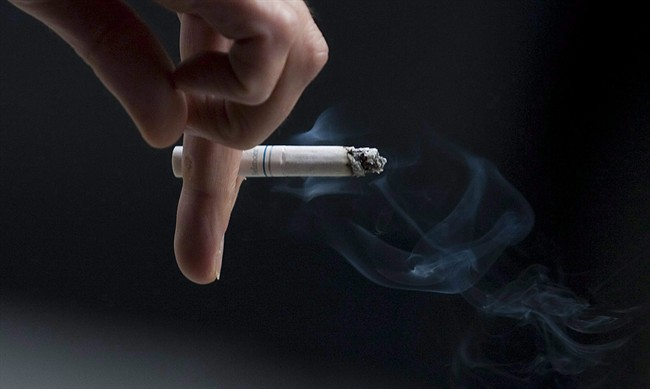OTTAWA – Long the whipping boys of revenue-hungry governments, Canadian smokers are now the target of the Conservative crusade against the deficit.

The Tories are making a $700-million tax grab by what it politely describes in the 2014 budget as “restoring the effectiveness of the excise duty on tobacco products.”
READ MORE: Seven highlights from this year’s ‘boring’ budget
In other words, it’s boosting excise taxes on tobacco that will increase the price of a carton of 200 cigarettes by $4. The initiatives also essentially end the discount on smokes sold at duty-free stores.
“This measure also includes corresponding increases in the rates of excise duty on other tobacco products,” the budget states, citing cigars, chewing tobacco and fine-cut tobacco for roll-your-own cigarettes.
The government expects the anti-smoke move will increase federal tax revenues by $685 million in 2014-15 – a major piece of the puzzle in Tory efforts to balance the books over the next two years.
The excise levies will be tied to the Consumer Price Index, and will be automatically adjusted every five years.
“Reducing tobacco consumption is an important health objective, and a key tool in achieving this objective is the excise duty on tobacco products,” the budget says.
As the government cracks down anew on smokers, it’s providing funding to initiatives aimed at cracking down on highly addictive opioids.
The Tories are committing $44.9 million over five years to expand the focus of the National Anti-Drug Strategy from illicit street drugs to prescription drug abuse as well.
“Canadian consumption of prescribed opioids has risen by 200 per cent since 2000,” the budget document states. “Closely tied to this increase in usage is an increasing rate of prescription drug abuse.”



Comments